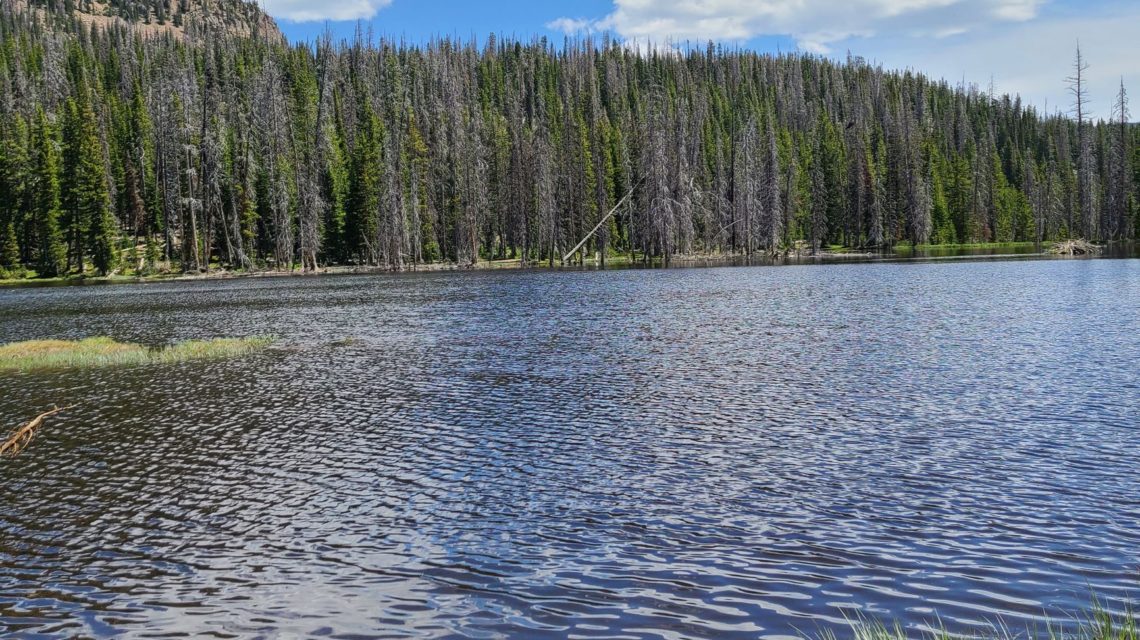Are the top branches of your tree starting to die? Are there small holes in the tree’s trunk? If your answer to these questions is yes, your tree has a borer problem. Borers are a type of insect that burrows into tree trunks and feeds on the inner layers. This causes major problems for trees, leaving them vulnerable to attacks from diseases and other insects.
Once borers enter trees, they are difficult to eliminate. Aspen tree borers, for example, stay in the tree bark for a couple of years and feed on the tree until they are fully developed. Bark beetles destroy vital water and nutrient conducting layers in trees, and the holes created by all borer insects leave the tree open to fungal infections. Read on to learn more about which trees are most susceptible to borer attacks and how to identify a borer infestation.
Skip to a Section:
- Ash/Lilac Borer
- Aspen and Poplar/Willow Borer
- Bark Beetle/IPS Engraver
- Bronze Birch Borer
- Fruit Tree Borer
- Locust Borer
- Peach Twig Borer
General Signs of a Borer Infestation
Following are key indications of a borer infestation:
-
-
- Holes in the trunk of your tree
- Sawdust (and sometimes sap) around the holes and near the base of the tree
- Dying leaves and branches at the top of the tree
- Uneven bulges in the trunk where the tree has grown around borer tunnels
-
Ash/Lilac Borer
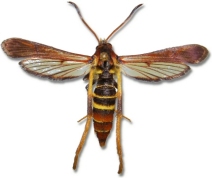

Adult lilac/ash borers are clear-winged moths that look like wasps. Like other borers, they lay their eggs in the bark of the tree, which allows the larvae to burrow deeper into the trunk to develop after hatching. Larvae develop inside the tree for about a year and emerge from the tree fully developed in late spring. Lilac borers create obvious holes in the trunk and leading branches that provide an entryway for fungi. The bark around the holes will usually peel back from the area, further exposing the tree. Once an infestation has been established, eliminating this parasitic pest is very difficult.
Emerald ash borers (EAB) are another type of boring insect that attacks ash trees. It originates in Asia and has a shimmery, emerald-green shell that makes it a jewel beetle. This pest has caused major problems in ash tree groves across the United States over the past 20 years. Because EAB is particularly aggressive and difficult to control, each year outbreaks of the pest are reported to the U.S. Department of Agriculture. While Utah has been untouched by this pest thus far, 35 other states have reported outbreaks, so it will likely continue to spread.
Aspen Borer and Poplar/Willow Borer
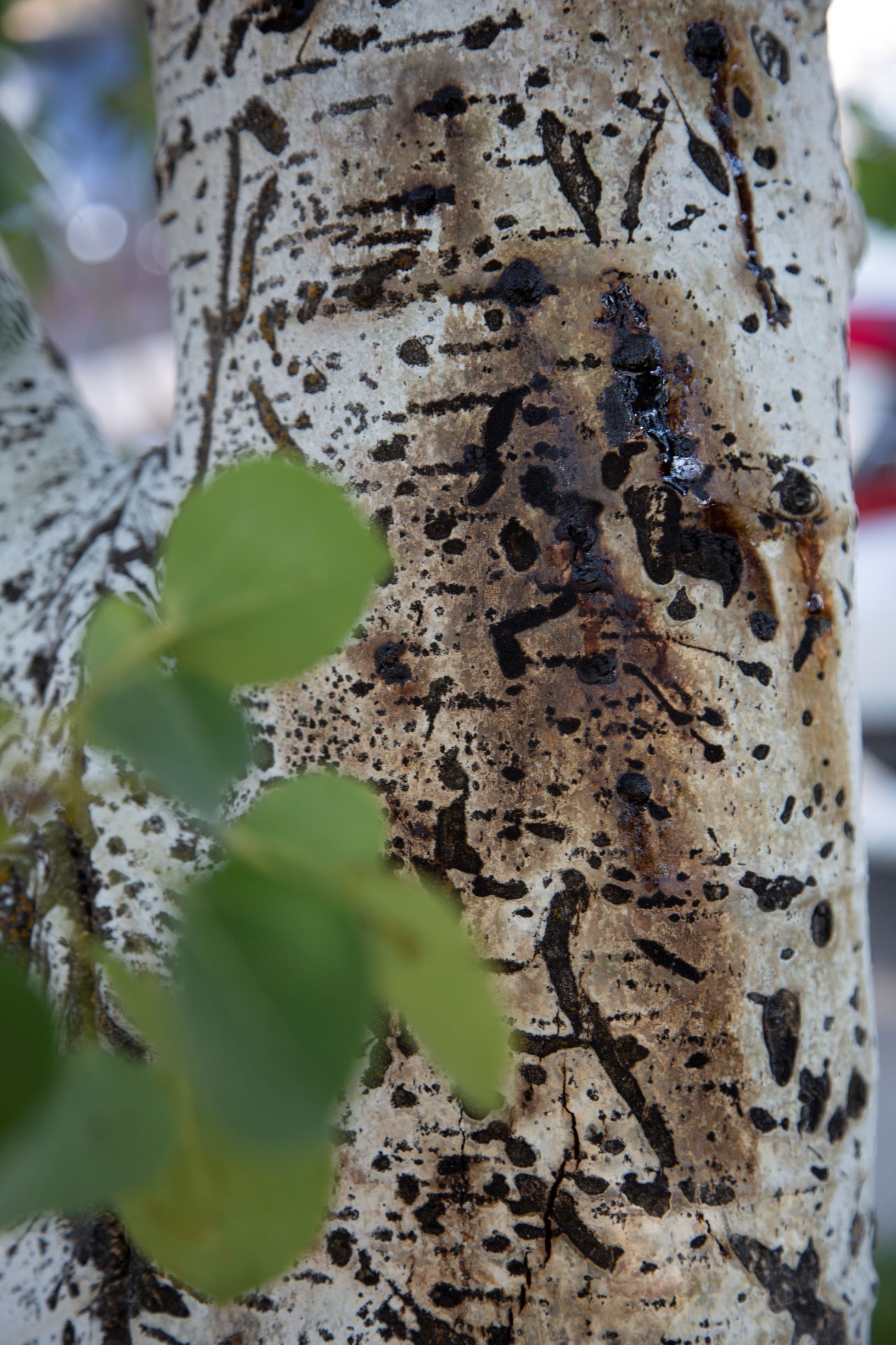

Over 30 different types of borer insects feed on aspen trees, and many of the same borers also feed on poplar and willow trees. Two of the most common aspen/poplar borers in Utah are the poplar borer and the flatheaded poplar borer.
The flatheaded poplar borer is roughly shaped like an arrowhead, with short antennas and a mottled grey-brown pattern. The poplar borer has a more stretched-out shape with much longer antennas and tiny dark dots all over its body. Both create about half-inch-wide holes (that sometimes ooze sap) in the trunks of the trees they attack. Once inside the tree, the larvae will remain for 2–4 years and emerge fully developed. During that time, they bore deep into the heart of the tree, causing extensive damage.
In addition to the tunneling damage they cause, many aspen/poplar borers carry diseases with them that are transferred to the trees they consume. The double challenge of fighting off boring insects and a fungal infection usually results in the death of the tree.
Bark Beetle/IPS Engraver
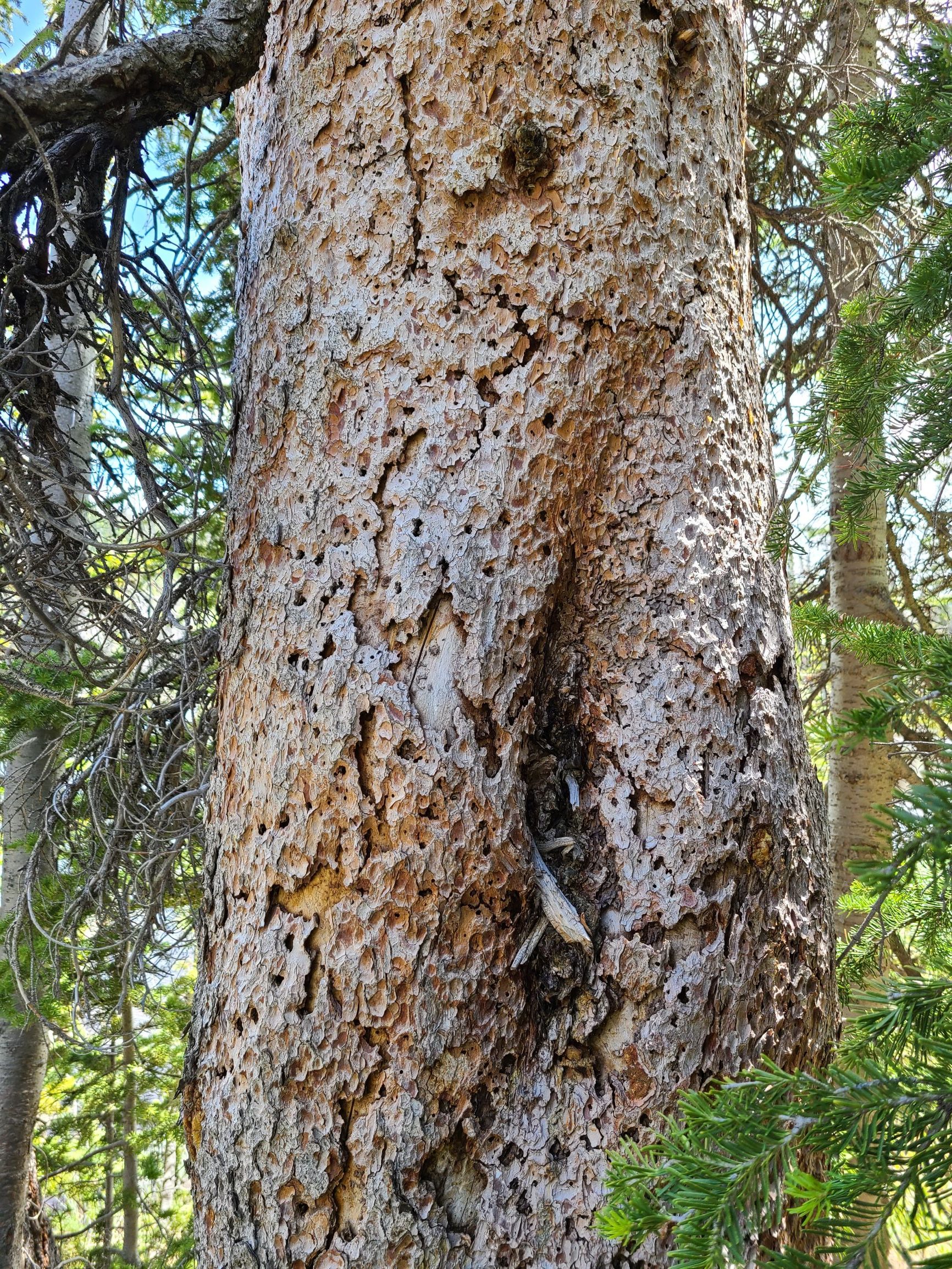

Female IPS Engravers (or bark beetles) lay their eggs in tree trunks. When they hatch, the larvae burrow deeper into the trunk and feed on vital layers of the tree. They only emerge from the trunk once to drop to the base of the tree, where they finish developing in the soil. Once the beetles are fully developed, they return to the trunk and create new holes, beginning the 6 to 8-week cycle again.
Bark beetles usually attack conifers that have been weakened by drought stress and other problems. They attack vulnerable trees because healthy trees will drown borer larvae by pushing sap through tunnel layers in the tree.
Once they’ve found a weak tree, bark beetles emit a scent signal to attract others. Oftentimes, IPS engravers also carry funguses into the tree, which worsens an infestation. You can identify bark beetle damage because the top of the tree will start dying first. The tallest branches are affected first because the beetles bore through the layers that move nutrients through the whole tree, and those branches are the farthest away.
Treating IPS engraver infestations is difficult because they only emerge from the tree twice in their lifecycle, so insect sprays must be performed at the correct time.
Bronze Birch Borer
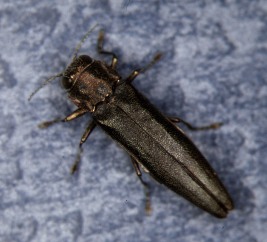

Adult birch borer beetles are golden brown and about half an inch long. They lay their eggs under the bark in birch tree trunks. When they hatch, they travel deeper into the tree where they feed on the inner layers until they reach maturity a year later. At this point, they leave the tree and restart the cycle.
Bronze birch borer insects attack many types of birch trees, particularly paper, silver, and gray birch varieties. Just like the IPS engraver, birch borers burrow into the tree trunk and feed on the nutrient layers, causing the top branches to die off first. This type of borer creates large, uneven holes in the trunk and leaves behind sawdust when it burrows into the tree. A dead give-away for a birch borer infestation is the sawdust you’ll see at the base of the tree. If you notice this type of damage on your tree, make sure you talk with an arborist about treatment options as soon as possible.
To get rid of birch borers, trees are usually treated each year in the spring and summer. Professional arborists can recommend a safe, effective treatment schedule to keep your tree alive.
Fruit Tree Borer
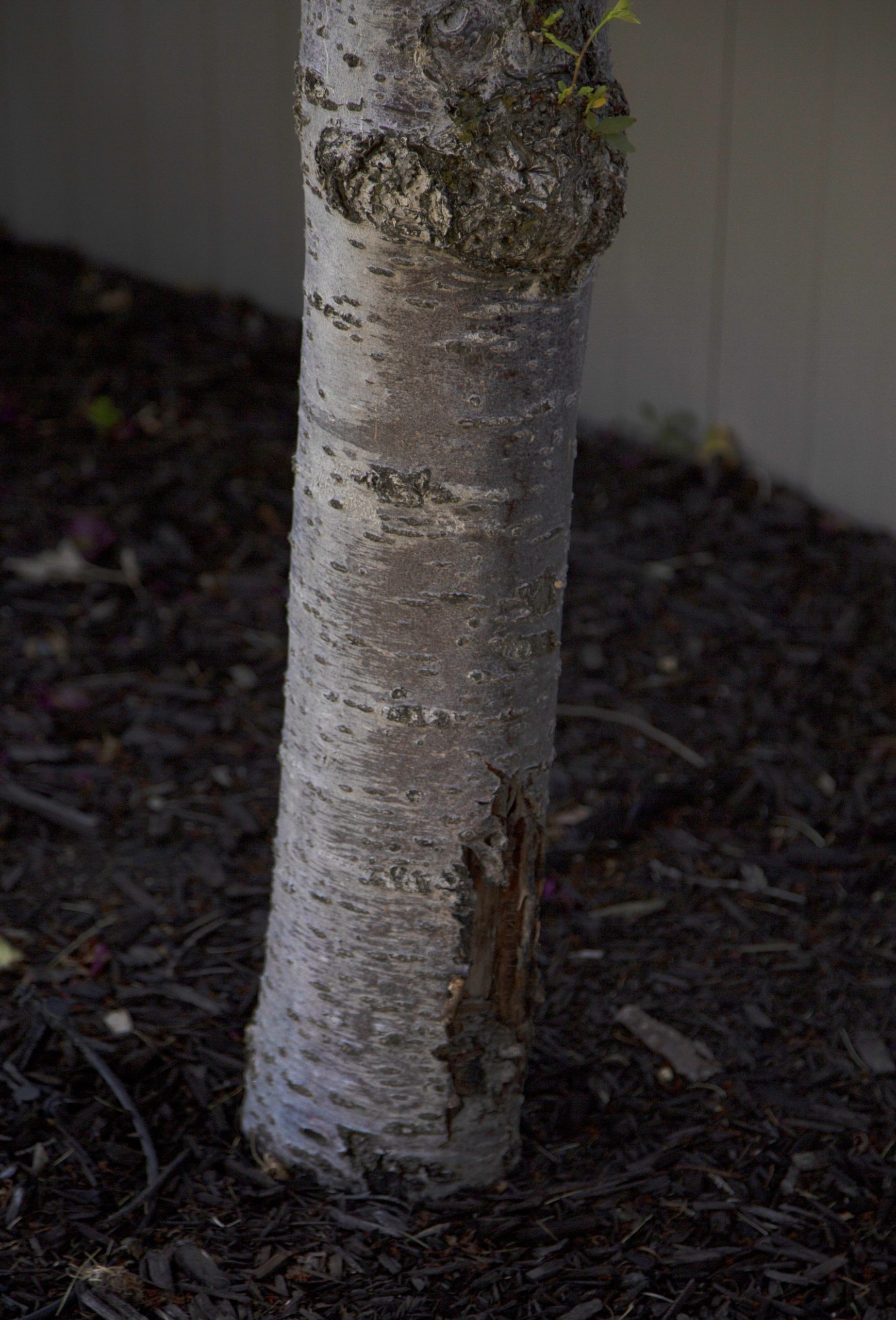

Fruit tree borers (like the greater peach tree borer) mainly attack peach, apricot, and other stone fruit trees. Greater peach tree borers look like wasps, but they’re actually a type of moth that lays its eggs near the base of the tree. Sometimes fruit tree borer damage is difficult to recognize because they enter the trunk through holes they create near the soil line and only attack up to 12 inches up the trunk. Sap oozes from the wounds they cause and sawdust is usually visible near the base of trees affected by fruit tree borers.
Shothole borers also attack stone fruit trees, but unlike greater peach tree borers, they leave tiny holes throughout the trunk. Like many other borer insects, they lay eggs under the bark in the late summer, allowing their larvae to burrow into and feed on the tree until they emerge fully grown the following summer. Fully grown shothole borers are small, flying beetles with black shells. To treat for shothole and greater peach tree borers, a certified tree technician should spray the trunk and branches each summer.
Locust Borer
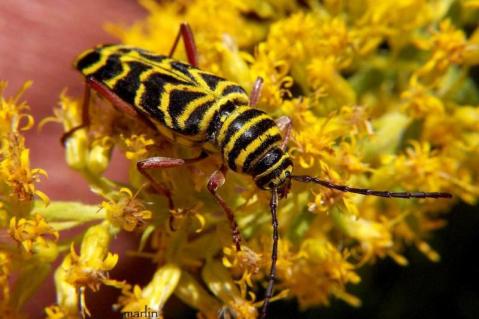

Adult locust borers are beetles with an uneven yellow and black-striped pattern. They lay their eggs in the bark (like most other borers) in autumn, then larvae hatch and overwinter deep inside the tree. The following summer, fully developed locust borers leave the tree to repeat the cycle.
Similar to aspen and poplar borers, over time locust borers tunnel into the center of the trees they infest, which severely weakens the tree. Sawdust around the base of the tree is a sign that almost always accompanies a locust borer infestation.
Peach Twig Borer
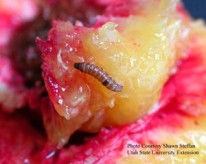

Peach twig borers are different from other types of borers because they attack through the tips of new growth on the branches and through the fruit. Though they don’t cause as much devastating damage as some other types of borers, peach twig borers can still negatively affect your harvest. Some signs of a peach twig borer infestation are wilted leaves/shoots and discoloration, sap-filled holes, and small lumps on fruit.
The adult form is a brown moth that lays eggs on twigs, leaves, or fruit. Peach twig borers begin their lifecycle each spring, and they go through about three generations a year.
How to Treat Borers
Most borers will only attack trees that are already weak from drought stress or insect-related defoliation, so the best way to fight borers is to prevent them in the first place by taking good care of your tree. However, sometimes uncontrollable factors will weaken your trees, leaving them vulnerable to borer infestations regardless of your efforts.
Whether your tree needs help with battling a current borer infestation or simply needs preventative treatments, Stewart’s can help! Stewart’s tree service programs can help prevent and treat most borer infestations. Call or text us at 801-226-2261 for more information and a free quote today.



